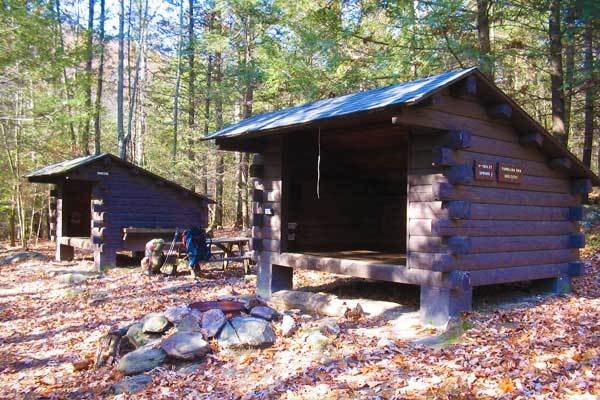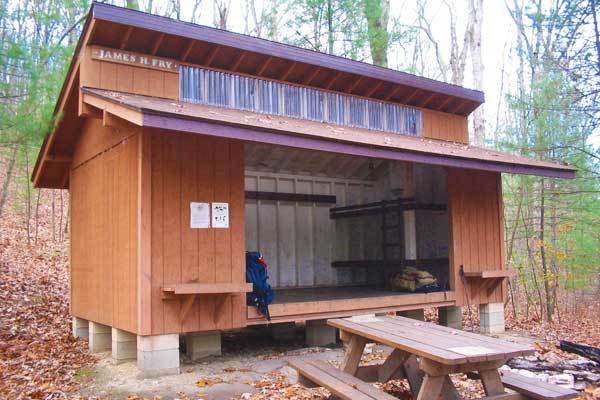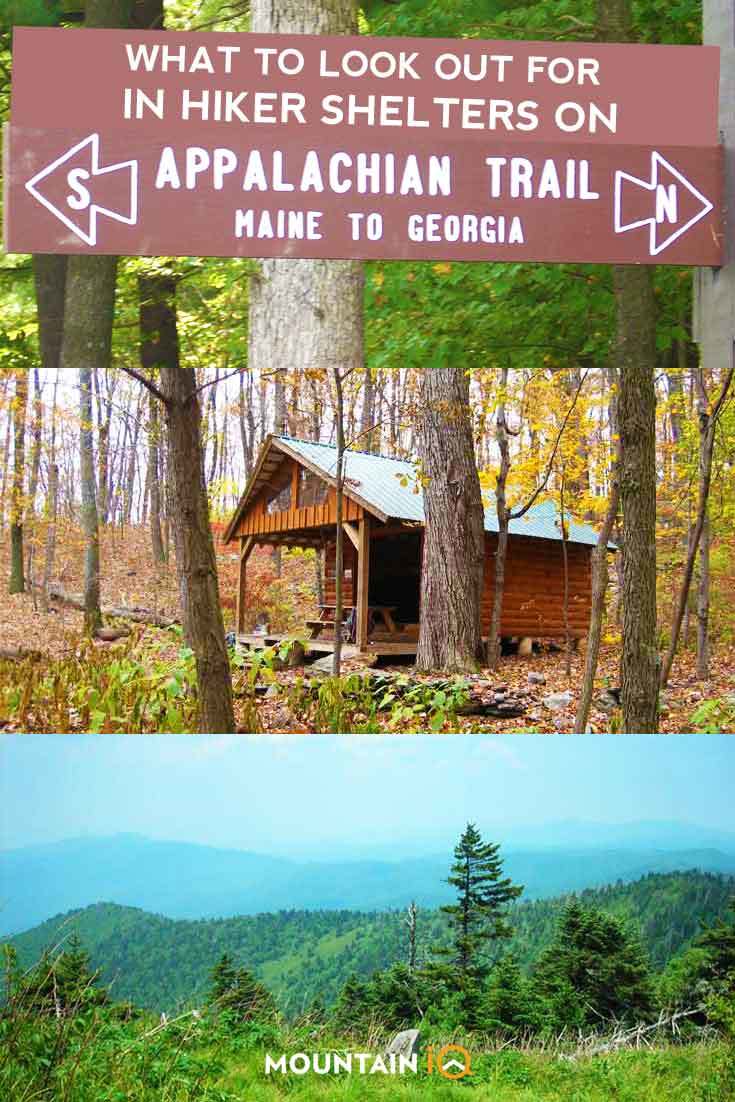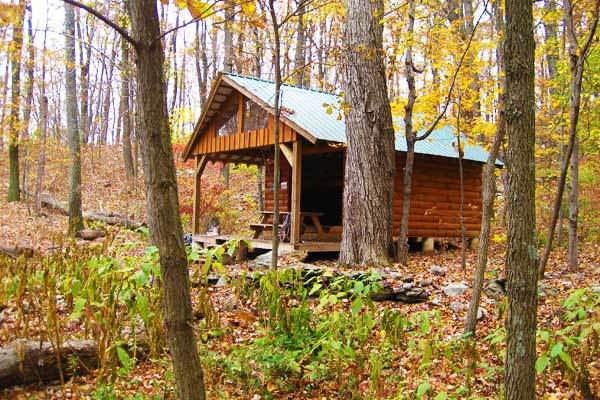Appalachian Trail is one of the most popular long-distance hikes in America, and, arguably, in the world (See best hikes in the world). Shelters on the trail are structures that are typically built by volunteers and are open for all hikers to use for free.
They are placed throughout the entire length of the trail, and hikers will typically pass by a few a day. This means that no matter what pace you hike, you can potentially stay at a shelter every night of your hike.
Shelters vary in size and hiker capacity. On average, most shelters can accommodate eight to twelve hikers. However, some shelters are much larger. Typically the shelter will have a platform, three walls, and a roof. There will be one open side.
Along with the shelter, the area around it will have amenities. There is typically an outhouse (also known as a privy), a water source, a fire pit, and somewhere to store your food while you sleep.
Appalachian Shelters: FAQs
Is it better to sleep in a tent or shelter?
Some hikers choose to stay in the shelters even though they’re also carrying a tent. It saves a little bit of time, setting up in a shelter and not having to put up and take down a tent.
If you feel like being social, staying in a shelter is the best way to meet other hikers. Additionally, if the weather is bad or raining, it’s much easier to stay in a shelter and keep your gear dry.
Even though there’s an abundance of shelters along the Appalachian Trail, still bring a tent, tarp, or hammock. There could be a variety of circumstances that prevent you from making it to a shelter at night. And the shelters work on a first come first serve basis, so you’re not guaranteed a spot at night.
If you’re a light sleeper and don’t want to be woken by other people making noise, you might prefer sleeping in your own tent. Having earplugs on hand is always quite helpful.
Check out our complete gear list for the Appalachian thru-hike.

Where are the shelters located?
Shelters vary in the distance apart, but there’s usually one every 8-12 miles. Sometimes they’re closer and sometimes they’re farther apart. At times, the shelter will be right along the trail. More often, they will be down a blue-blazed side trail. There will always be a sign showing the right way.
Where do you store your food at night?
The shelter area will typically have somewhere to store food bags. Common options are bear boxes, pulley systems, or “bear bag trees” which are metal poles with branches where bags can be hung. Most shelters have dangling hooks where food bags can be stored as well. However, not everyone is comfortable sleeping right next to their food.
Are fires allowed at shelters?
Typically yes, but not always. Most shelter areas will have a designated fire pit.
You’ll need to collect your own wood. However, some states do not allow fires along the Appalachian Trail. Refer to the guidebook – Appalachian Trail Thru-Hiker's Companion (2019) – if you’re not sure if fires are allowed where you’re hiking.
Do I have to stay at shelter areas?
No, you don’t have to. Sometimes there are marked campsites along the Appalachian Trail that don’t have shelters but are still equipped with camping amenities. You could also set up your tent close to the shelter and not stay inside.
It’s also fine to camp at non-designated campsite areas in most places along the trail.
Again, check the guidebook to see if there are rules against it in the region you’re in. If you are camping at a non-designated site, be sure not to damage any flora. When you leave, make your camping area look like you were never there.
Do I need to worry about animals at the shelters?
There will definitely be animals around. Mice, squirrels, and chipmunks tend to hang about waiting for dropped crumbs. The bolder ones may even try to sneak into your food bag and steal something. Do your best to keep even a bit of food you have from the animals. Their chances of survival decrease as they become reliant on human food.
You may occasionally see or hear larger animals such as bears, coyotes, and snakes. You don’t have to worry about the coyotes because they keep their distance from people. Snakes usually don’t want to be around us either, but you might see them around.
It’s possible that you might see bears at the shelters. Most of them want to keep their distance from humans. However, it’s not unheard of for a bear to develop a taste for human food and pay evening visits to the shelters.
This is another reason it’s important to keep food away from them. It becomes dangerous for both the bears and hikers when the bears habitually visit the shelters.

Is there shelter etiquette that hikers should follow?
Good shelter etiquette is based on being mindful of other hikers and treating the shelters as communal spaces. Keep your things tidy and in your own space. If another hiker shows up, move over to make room. Be quiet during the late hours and early mornings. Don’t leave any of your things behind.
Keep in mind that volunteers are typically the people who build and maintain the shelter areas. If you damage the shelter or leave a mess, someone else will have to pack out the things you left or repair the damage.
Basically, just be aware of others and respect the space.
Is it safe to stay in the shelters?
In general, yes, they are very safe to stay in. The hiking community is usually kind and respectful.
The hiking community is not immune to the regular problems of society, however. Female hikers may have to deal with sexual harassment on occasion, and perhaps men may deal with it also.
If this comes up, try to stick close to other hikers who are around. If you find yourself alone with someone who’s giving you bad vibes, it’s best to hike on and camp elsewhere.
Will I meet other hikers at the shelters?
Most likely. Sometimes you might have the whole shelter to yourself. Most of the time, there will be other hikers there as well. If you want to make friends or find a hiking partner, aim to stay at shelters along the trail.
See all North American Mountain Ranges and all about the Appalachian Mountains


